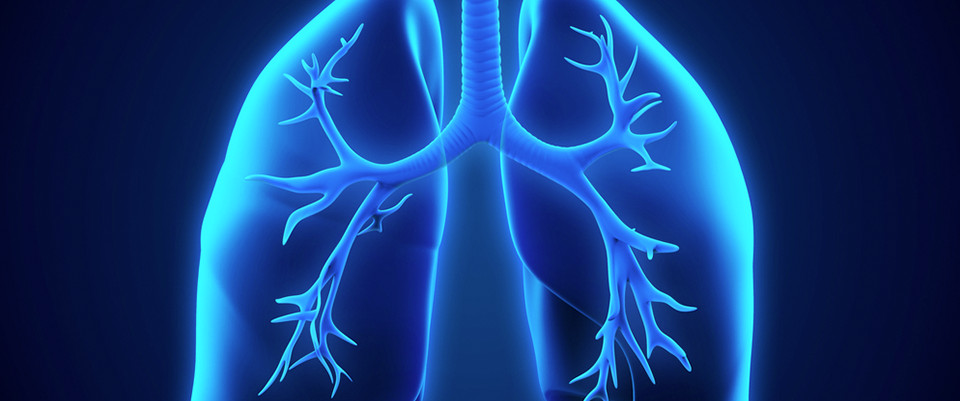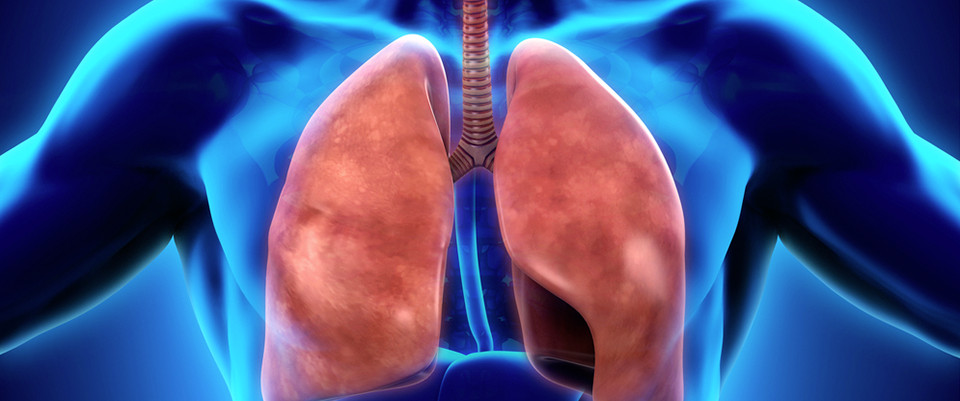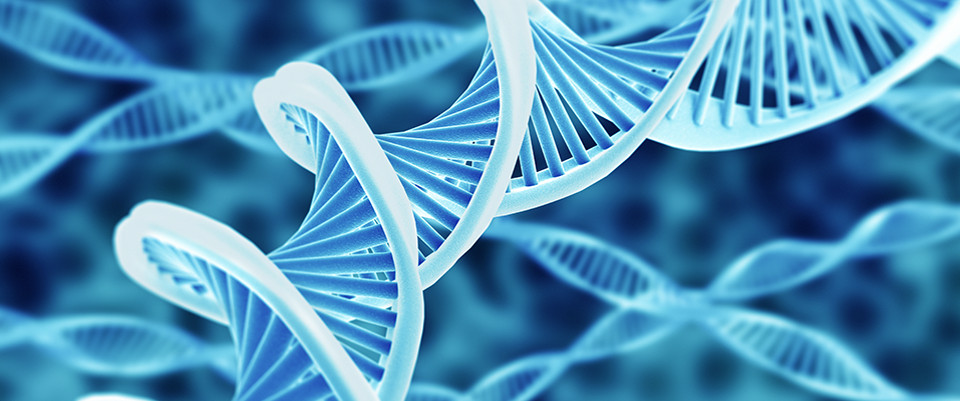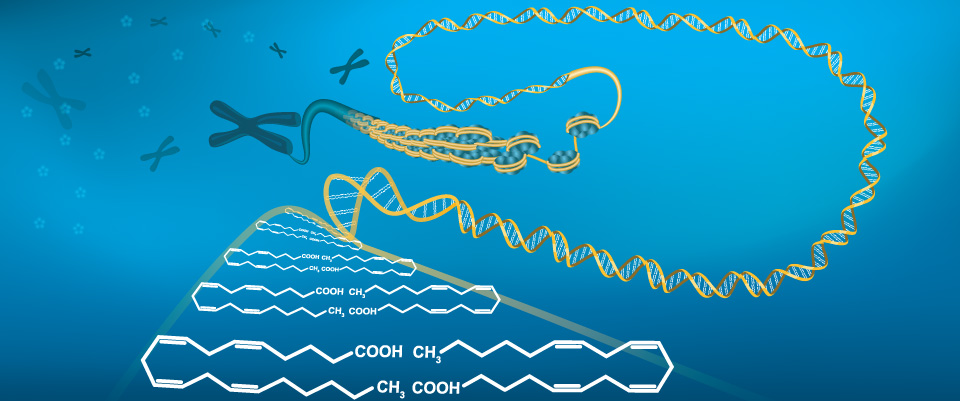PubMed
Chemical diversity in angiosperms - monoterpene synthases control complex reactions that provide the precursors for ecologically and commercially important monoterpenoids
Plant J. 2024 Apr 2. doi: 10.1111/tpj.16743. Online ahead of print.ABSTRACTMonoterpene synthases (MTSs) catalyze the first committed step in the biosynthesis of monoterpenoids, a class of specialized metabolites with particularly high chemical diversity in angiosperms. In addition to accomplishing a rate enhancement, these enzymes manage the formation and turnover of highly reactive carbocation intermediates formed from a prenyl diphosphate substrate. At each step along the reaction path, a cationic intermediate can be subject to cyclization, migration of a proton, hydride, or alkyl group, or quenching to terminate the sequence. However, enzymatic control of ligand folding, stabilization of specific intermediates, and defined quenching chemistry can maintain the specificity for forming a signature product. This review article will discuss our current understanding of how angiosperm MTSs control the reaction environment. Such knowledge allows inferences about the origin and regulation of chemical diversity, which is pertinent for appreciating the role of monoterpenoids in plant ecology but also for aiding commercial efforts that harness the accumulation of these specialized metabolites for the food, cosmetic, and pharmaceutical industries.PMID:38565299 | DOI:10.1111/tpj.16743
Imbalance in glucose metabolism regulates the transition of microglia from homeostasis to Disease Associated Microglia stage 1
J Neurosci. 2024 Apr 2:e1563232024. doi: 10.1523/JNEUROSCI.1563-23.2024. Online ahead of print.ABSTRACTMicroglia undergo two-stage activation in neurodegenerative diseases, known as disease-associated microglia (DAM). TREM2 mediates the DAM2 stage transition, but what regulates the first DAM1 stage transition is unknown. We report that glucose dyshomeostasis inhibits DAM1 activation, and PKM2 plays a role. As in tumors, PKM2 was aberrantly elevated in both male and female human AD brains, but unlike in tumors, it is expressed as active tetramers, as well as among TREM2+ microglia surrounding plaques in 5XFAD male and female mice. snRNAseq analyses of microglia without Pkm2 in 5XFAD mice revealed significant increases in DAM1 markers in a distinct 'metabolic' cluster, which is enriched in genes for glucose metabolism, DAM1, and AD risk. 5XFAD mice incidentally exhibited a significant reduction in amyloid pathology without microglial Pkm2 Surprisingly, microglia in 5XFAD without Pkm2 exhibited increases in glycolysis and spare respiratory capacity, which correlated with restoration of mitochondrial cristae alterations. In addition, in situ spatial metabolomics of plaque-bearing microglia revealed an increase in respiratory activity. These results together suggest that it is not only glycolytic but also respiratory inputs that are critical to the development of DAM signatures in 5XFAD mice.Significance Statement Although reduced glucose uptake in the brain has been recognized as one of the earliest pathological events that accompany Alzheimer's disease (AD), it has not been clear whether this was due to a brain-wide defect in glucose metabolism or a dysfunction in a particular cell type. Our data suggest that dysregulation of metabolic homeostasis in microglia is critical for global AD pathology in a mouse model. Upon restoring glucose metabolism in microglia genetically, AD pathology is attenuated with a concomitant increase in DAM genes, especially DAM1 genes. These results suggest that this increase in DAM gene expression is protective against AD pathology, and glucose dyshomeostasis is a trigger to inhibit expression of protective DAM genes in AD.PMID:38565291 | DOI:10.1523/JNEUROSCI.1563-23.2024
Nanoplastic toxicity induces metabolic shifts in Populus × euramericana cv. '74/76' revealed by multi-omics analysis
J Hazard Mater. 2024 Mar 30;470:134148. doi: 10.1016/j.jhazmat.2024.134148. Online ahead of print.ABSTRACTThere is increasing global concern regarding the pervasive issue of plastic pollution. We investigated the response of Populus × euramericana cv. '74/76' to nanoplastic toxicity via phenotypic, microanatomical, physiological, transcriptomic, and metabolomic approaches. Polystyrene nanoplastics (PS-NPs) were distributed throughout the test plants after the application of PS-NPs. Nanoplastics principally accumulated in the roots; minimal fractions were translocated to the leaves. In leaves, however, PS-NPs easily penetrated membranes and became concentrated in chloroplasts, causing thylakoid disintegration and chlorophyll degradation. Finally, oxidant damage from the influx of PS-NPs led to diminished photosynthesis, stunted growth, and etiolation and/or wilting. By integrating dual-omics data, we found that plants could counteract mild PS-NP-induced oxidative stress through the antioxidant enzyme system without initiating secondary metabolic defense mechanisms. In contrast, severe PS-NP treatments promoted a shift in metabolic pattern from primary metabolism to secondary metabolic defense mechanisms, an effect that was particularly pronounced during the upregulation of flavonoid biosynthesis. Our findings provide a useful framework from which to further clarify the roles of key biochemical pathways in plant responses to nanoplastic toxicity. Our work also supports the development of effective strategies to mitigate the environmental risks of nanoplastics by biologically immobilizing them in contaminated lands.PMID:38565012 | DOI:10.1016/j.jhazmat.2024.134148
Analysis of blood biochemistry and non-targeted metabolomics of endometritis in dairy cows
Anim Reprod Sci. 2024 Mar 30;264:107460. doi: 10.1016/j.anireprosci.2024.107460. Online ahead of print.ABSTRACTThe incidence of bovine endometritis, which has a negative impact on the reproduction of dairy cows, has been recently increasing. In this study, the differential markers and metabolites of healthy cows and cows with endometritis were analyzed by measuring blood biochemical indicators and immune factors using biochemical and enzyme-linked immunosorbent assay kits combined with nontargeted metabolomics. The LC-QTOF platform was used to evaluate the serum metabolomics of healthy cows and cows with endometritis after 21-27 days of calving. The results showed that glucose, free fatty acid, calcium, sodium, albumin, and alanine aminotransferase levels were significantly lower in the serum of cows with endometritis than in healthy cows (P < 0.05). However, the serum potassium, interleukin-1, interleukin-6, and tumor necrosis factor levels were significantly higher in cows with endometritis (P < 0.05). In addition, the serum metabolome data analysis of the two groups showed that the expression of 468 metabolites was significantly different (P < 0.05), of which 291 were upregulated and 177 were downregulated. These metabolites were involved in 78 metabolic pathways, including amino acid, nucleotide, carbohydrate, lipid, and vitamin metabolism pathways; signal transduction pathways, and other biological pathways. Taken together, negative energy balance and immune activation, which are related to local abnormalities in amino acid, lipid, and carbohydrate metabolism, were the important causes of endometritis in dairy cows. Metabolites such as glucose, carnosine, dehydroascorbic acid, L-malic acid, tetrahydrofolic acid, and UDP-glucose may be used as key indicators in the hematological diagnosis and treatment of endometritis in dairy cows.PMID:38564886 | DOI:10.1016/j.anireprosci.2024.107460
Aldicarb disturbed bile acid, steroid hormone and oxylipin homeostasis in C57BL/6 J mice
Ecotoxicol Environ Saf. 2024 Apr 1;275:116285. doi: 10.1016/j.ecoenv.2024.116285. Online ahead of print.ABSTRACTMounting evidence has shown that the gut microbiota plays a key role in human health. The homeostasis of the gut microbiota could be affected by many factors, including environmental chemicals. Aldicarb is a carbamate insecticide used to control a variety of insects and nematode pests in agriculture. Aldicarb is highly toxic and its wide existence has become a global public health concern. In our previous study, we have demonstrated that aldicarb disturbed the gut microbial community structure and composition. However, the impacts of aldicarb on gut microbiota-derived metabolites, bile acids, remain elusive. In present study, we performed targeted metabolomics analysis to explore the effects of aldicarb exposure on bile acids, as well as steroid hormones and oxylipins in the serum, feces and liver of C57BL/6 J mice. Our results showed that aldicarb exposure disturbed the level of various bile acids, steroid hormones and oxylipins in the serum and feces of C57BL/6 J mice. In the liver, the level of cortisol was decreased, meanwhile 15,16-dihydroxyoctadeca-9,12-dienoic acid was increased in aldicarb-treated mice. Metagenomic sequencing analysis showed that the relative abundance of a bile salt hydrolase, choloylglycine hydrolase (EC:3.5.1.24) and a sulfatase enzyme involved in steroid hormone metabolism, arylsulfatase, was significantly increased by aldicarb exposure. Furthermore, correlations were found between gut microbiota and various serum metabolites. The results from this study are helpful to improve the understanding of the impact of carbamate insecticides on host and microbial metabolism.PMID:38564866 | DOI:10.1016/j.ecoenv.2024.116285
Metabolomics-driven investigation of plant defense response against pest and pathogen attack
Physiol Plant. 2024 Mar-Apr;176(2):e14270. doi: 10.1111/ppl.14270.ABSTRACTThe advancement of metabolomics has assisted in the identification of various bewildering characteristics of the biological system. Metabolomics is a standard approach, facilitating crucial aspects of system biology with absolute quantification of metabolites using minimum samples, based on liquid/gas chromatography, mass spectrometry and nuclear magnetic resonance. The metabolome profiling has narrowed the wide gaps of missing information and has enhanced the understanding of a wide spectrum of plant-environment interactions by highlighting the complex pathways regulating biochemical reactions and cellular physiology under a particular set of conditions. This high throughput technique also plays a prominent role in combined analyses of plant metabolomics and other omics datasets. Plant metabolomics has opened a wide paradigm of opportunities for developing stress-tolerant plants, ensuring better food quality and quantity. However, despite advantageous methods and databases, the technique has a few limitations, such as ineffective 3D capturing of metabolites, low comprehensiveness, and lack of cell-based sampling. In the future, an expansion of plant-pathogen and plant-pest response towards the metabolite architecture is necessary to understand the intricacies of plant defence against invaders, elucidation of metabolic pathway operational during defence and developing a direct correlation between metabolites and biotic stresses. Our aim is to provide an overview of metabolomics and its utilities for the identification of biomarkers or key metabolites associated with biotic stress, devising improved diagnostic methods to efficiently assess pest and pathogen attack and generating improved crop varieties with the help of combined application of analytical and molecular tools.PMID:38566280 | DOI:10.1111/ppl.14270
AnDREB5.1, a A5 group DREB gene from desert shrub Ammopiptanthus nanus, confers osmotic and cold stress tolerances in transgenic tobacco
Physiol Plant. 2024 Mar-Apr;176(2):e14272. doi: 10.1111/ppl.14272.ABSTRACTThe Dehydration-Responsive Element Binding (DREB) subfamily of transcription factors plays crucial roles in plant abiotic stress response. Ammopiptanthus nanus (A. nanus) is an eremophyte exhibiting remarkable tolerance to environmental stress and DREB proteins may contribute to its tolerance to water deficit and low-temperature stress. In the present study, an A. nanus DREB A5 group transcription factor gene, AnDREB5.1, was isolated and characterized in terms of structure and function in abiotic stress tolerance. AnDREB5.1 protein is distributed in the nucleus, possesses transactivation capacity, and is capable of binding to DRE core cis-acting element. The transcription of AnDREB5.1 was induced under osmotic and cold stress. Tobacco seedlings overexpressing AnDREB5.1 displayed higher tolerance to cold stress, osmotic stress, and oxidative stress compared to wild-type tobacco (WT). Under osmotic and cold stress, overexpression of AnDREB5.1 increased antioxidant enzyme activity in tobacco leaves, inhibiting excessive elevation of ROS levels. Transcriptome sequencing analysis showed that overexpression of AnDREB5.1 raised the tolerance of transgenic tobacco seedlings to abiotic stress by regulating multiple genes, including antioxidant enzymes, transcription factors, and stress-tolerant related functional genes like NtCOR413 and NtLEA14. This study provides new evidence for understanding the potential roles of the DREB A5 subgroup members in plants.PMID:38566275 | DOI:10.1111/ppl.14272
Untargeted Metabolomic Analysis of Leaves and Roots of Jatropha curcas Genotypes with Contrasting Levels of Phorbol Esters
Physiol Plant. 2024 Mar-Apr;176(2):e14274. doi: 10.1111/ppl.14274.ABSTRACTAIMS: Phorbol esters (PE) are toxic diterpenoids accumulated in physic nut (Jatropha curcas L.) seed tissues. Their biosynthetic pathway remains unknown, and the participation of roots in this process may be possible. Thus, we set out to study the deposition pattern of PE and other terpenoids in roots and leaves of genotypes with detected (DPE) and not detected (NPE) phorbol esters based on previous studies.OUTLINE OF DATA RESOURCES: We analyzed physic nut leaf and root organic extracts using LC-HRMS. By an untargeted metabolomics approach, it was possible to annotate 496 and 146 metabolites in the positive and negative electrospray ionization modes, respectively.KEY RESULTS: PE were detected only in samples of the DPE genotype. Remarkably, PE were found in both leaves and roots, making this study the first report of PE in J. curcas roots. Furthermore, untargeted metabolomic analysis revealed that diterpenoids and apocarotenoids are preferentially accumulated in the DPE genotype in comparison with NPE, which may be linked to the divergence between the genotypes concerning PE biosynthesis, since sesquiterpenoids showed greater abundance in the NPE.UTILITY OF THE RESOURCE: The LC-HRMS files, publicly available in the MassIVE database (identifier MSV000092920), are valuable as they expand our understanding of PE biosynthesis, which can assist in the development of molecular strategies to reduce PE levels in toxic genotypes, making possible the food use of the seedcake, as well as its potential to contain high-quality spectral information about several other metabolites that may possess biological activity.PMID:38566272 | DOI:10.1111/ppl.14274
Correlation of distribution characteristics and dynamic changes of gut microbiota with the efficacy of immunotherapy in EGFR-mutated non-small cell lung cancer
J Transl Med. 2024 Apr 2;22(1):326. doi: 10.1186/s12967-024-05135-5.ABSTRACTBACKGROUND: The effects of gut microbiota and metabolites on the responses to immune checkpoint inhibitors (ICIs) in advanced epidermal growth factor receptor (EGFR) wild-type non-small cell lung cancer (NSCLC) have been studied. However, their effects on EGFR-mutated (EGFR +) NSCLC remain unknown.METHODS: We prospectively recorded the clinicopathological characteristics of patients with advanced EGFR + NSCLC and assessed potential associations between the use of antibiotics or probiotics and immunotherapy efficacy. Fecal samples were collected at baseline, early on-treatment, response and progression status and were subjected to metagenomic next-generation sequencing and ultra-high-performance liquid chromatography-mass spectrometry analyses to assess the effects of gut microbiota and metabolites on immunotherapy efficacy.RESULTS: The clinical data of 74 advanced EGFR + NSCLC patients were complete and 18 patients' fecal samples were dynamically collected. Patients that used antibiotics had shorter progression-free survival (PFS) (mPFS, 4.8 vs. 6.7 months; P = 0.037); probiotics had no impact on PFS. Two dynamic types of gut microbiota during immunotherapy were identified: one type showed the lowest relative abundance at the response time point, whereas the other type showed the highest abundance at the response time point. Metabolomics revealed significant differences in metabolites distribution between responders and non-responders. Deoxycholic acid, glycerol, and quinolinic acid were enriched in responders, whereas L-citrulline was enriched in non-responders. There was a significant correlation between gut microbiota and metabolites.CONCLUSIONS: The use of antibiotics weakens immunotherapy efficacy in patients with advanced EGFR + NSCLC. The distribution characteristics and dynamic changes of gut microbiota and metabolites may indicate the efficacy of immunotherapy in advanced EGFR + NSCLC.PMID:38566102 | DOI:10.1186/s12967-024-05135-5
Combined sensory, volatilome and transcriptome analyses identify a limonene terpene synthase as a major contributor to the characteristic aroma of a Coffea arabica L. specialty coffee
BMC Plant Biol. 2024 Apr 3;24(1):238. doi: 10.1186/s12870-024-04890-3.ABSTRACTBACKGROUND: The fruity aromatic bouquet of coffee has attracted recent interest to differentiate high value market produce as specialty coffee. Although the volatile compounds present in green and roasted coffee beans have been extensively described, no study has yet linked varietal molecular differences to the greater abundance of specific substances and support the aroma specificity of specialty coffees.RESULTS: This study compared four Arabica genotypes including one, Geisha Especial, suggested to generate specialty coffee. Formal sensory evaluations of coffee beverages stressed the importance of coffee genotype in aroma perception and that Geisha Especial-made coffee stood out by having fine fruity, and floral, aromas and a more balanced acidity. Comparative SPME-GC-MS analyses of green and roasted bean volatile compounds indicated that those of Geisha Especial differed by having greater amounts of limonene and 3-methylbutanoic acid in agreement with the coffee cup aroma perception. A search for gene ontology differences of ripening beans transcriptomes of the four varieties revealed that they differed by metabolic processes linked to terpene biosynthesis due to the greater gene expression of prenyl-pyrophosphate biosynthetic genes and terpene synthases. Only one terpene synthase (CaTPS10-like) had an expression pattern that paralleled limonene loss during the final stage of berry ripening and limonene content in the studied four varieties beans. Its functional expression in tobacco leaves confirmed its functioning as a limonene synthase.CONCLUSIONS: Taken together, these data indicate that coffee variety genotypic specificities may influence ripe berry chemotype and final coffee aroma unicity. For the specialty coffee variety Geisha Especial, greater expression of terpene biosynthetic genes including CaTPS10-like, a limonene synthase, resulted in the greater abundance of limonene in green beans, roasted beans and a unique citrus note of the coffee drink.PMID:38566027 | DOI:10.1186/s12870-024-04890-3
The plasma kynurenine-to-tryptophan ratio as a biomarker of tuberculosis disease in people living with HIV on antiretroviral therapy: an exploratory nested case-control study
BMC Infect Dis. 2024 Apr 2;24(1):372. doi: 10.1186/s12879-024-09258-4.ABSTRACTBACKGROUND: Non-sputum-based tests are needed to predict or diagnose tuberculosis (TB) disease in people living with HIV (PWH). The enzyme indoleamine 2, 3-dioxygenase-1 (IDO1) is expressed in tuberculoid granuloma and catabolizes tryptophan (Trp) to kynurenine (Kyn). IDO1 activity compromises innate and adaptive immune responses, promoting mycobacterial survival. The plasma Kyn-to-Trp (K/T) ratio is a potential TB diagnostic and/or predictive biomarker in PWH on long-term antiretroviral therapy (ART).METHODS: We compared plasma K/T ratios in samples from PWH, who were followed up prospectively and developed TB disease after ART initiation. Controls were matched for age and duration of ART. Kyn and Trp were measured at 3 timepoints; at TB diagnosis, 6 months before TB diagnosis and 6 months after TB diagnosis, using ultra performance liquid chromatography combined with mass spectrometry.RESULTS: The K/T ratios were higher for patients with TB disease at time of diagnosis (median, 0.086; IQR, 0.069-0.123) compared to controls (0.055; IQR 0.045-0.064; p = 0.006), but not before or after TB diagnosis. K/T ratios significantly declined after successful TB treatment, but increased upon treatment failure. The K/T ratios showed a parabolic correlation with CD4 cell counts in participants with TB (p = 0.005), but there was no correlation in controls.CONCLUSIONS: The plasma K/T ratio helped identify TB disease and may serve as an adjunctive biomarker for for monitoring TB treatment in PWH. Validation studies to ascertain these findings and evaluate the optimum cut-off for diagnosis of TB disease in PWH should be undertaken in well-designed prospective cohorts.TRIAL REGISTRATION: ClinicalTrials.gov Identifier: NCT00411983.PMID:38565993 | DOI:10.1186/s12879-024-09258-4
Packaging and containerization of computational methods
Nat Protoc. 2024 Apr 2. doi: 10.1038/s41596-024-00986-0. Online ahead of print.ABSTRACTMethods for analyzing the full complement of a biomolecule type, e.g., proteomics or metabolomics, generate large amounts of complex data. The software tools used to analyze omics data have reshaped the landscape of modern biology and become an essential component of biomedical research. These tools are themselves quite complex and often require the installation of other supporting software, libraries and/or databases. A researcher may also be using multiple different tools that require different versions of the same supporting materials. The increasing dependence of biomedical scientists on these powerful tools creates a need for easier installation and greater usability. Packaging and containerization are different approaches to satisfy this need by delivering omics tools already wrapped in additional software that makes the tools easier to install and use. In this systematic review, we describe and compare the features of prominent packaging and containerization platforms. We outline the challenges, advantages and limitations of each approach and some of the most widely used platforms from the perspectives of users, software developers and system administrators. We also propose principles to make the distribution of omics software more sustainable and robust to increase the reproducibility of biomedical and life science research.PMID:38565959 | DOI:10.1038/s41596-024-00986-0
Oxidized glutathione reverts carbapenem resistance in bla<sub>NDM-1</sub>-carrying Escherichia coli
EMBO Mol Med. 2024 Apr 2. doi: 10.1038/s44321-024-00061-x. Online ahead of print.ABSTRACTThe emergence of drug-resistant Enterobacteriaceae carrying plasmid-mediated β-lactamase genes has become a significant threat to public health. Organisms in the Enterobacteriaceae family containing New Delhi metallo-β-lactamase‑1 (NDM-1) and its variants, which are capable of hydrolyzing nearly all β-lactam antibacterial agents, including carbapenems, are referred to as superbugs and distributed worldwide. Despite efforts over the past decade, the discovery of an NDM-1 inhibitor that can reach the clinic remains a challenge. Here, we identified oxidized glutathione (GSSG) as a metabolic biomarker for blaNDM-1 using a non-targeted metabolomics approach and demonstrated that GSSG supplementation could restore carbapenem susceptibility in Escherichia coli carrying blaNDM-1 in vitro and in vivo. We showed that exogenous GSSG promotes the bactericidal effects of carbapenems by interfering with intracellular redox homeostasis and inhibiting the expression of NDM-1 in drug-resistant E. coli. This study establishes a metabolomics-based strategy to potentiate metabolism-dependent antibiotic efficacy for the treatment of antibiotic-resistant bacteria.PMID:38565805 | DOI:10.1038/s44321-024-00061-x
Deciphering feedback regulation of prostaglandin F2α in blood stasis syndrome using nitrogen-doped porous transition metal carbides
Mikrochim Acta. 2024 Apr 3;191(5):231. doi: 10.1007/s00604-024-06312-5.ABSTRACTBlood stasis syndrome (BSS) has persistent health risks; however, its pathogenesis remains elusive. This obscurity may result in missed opportunities for early intervention, increased susceptibility to chronic diseases, and reduced accuracy and efficacy of treatments. Metabolomics, employing the matrix-assisted laser desorption/ionization (MALDI) strategy, presents distinct advantages in biomarker discovery and unraveling molecular mechanisms. Nonetheless, the challenge is to develop efficient matrices for high-sensitivity and high-throughput analysis of diverse potential biomarkers in complex biosamples. This work utilized nitrogen-doped porous transition metal carbides and nitrides (NP-MXene) as a MALDI matrix to delve into the molecular mechanisms underlying BSS pathogenesis. Structural optimization yielded heightened peak sensitivity (by 1.49-fold) and increased peak numbers (by 1.16-fold) in clinical biosamples. Validation with animal models and clinical serum biosamples revealed significant differences in metabolic fingerprints between BSS and control groups, achieving an overall diagnostic efficacy of 0.905 (95% CI, 0.76-0.979). Prostaglandin F2α was identified as a potential biomarker (diagnostics efficiency of 0.711, specificity = 0.7, sensitivity = 0.6), and pathway enrichment analysis disclosed disruptions in arachidonic acid metabolism in BSS. This innovative approach not only advances comprehension of BSS pathogenesis, but also provides valuable insights for personalized treatment and diagnostic precision.PMID:38565795 | DOI:10.1007/s00604-024-06312-5
From Data to Cure: A Comprehensive Exploration of Multi-omics Data Analysis for Targeted Therapies
Mol Biotechnol. 2024 Apr 2. doi: 10.1007/s12033-024-01133-6. Online ahead of print.ABSTRACTIn the dynamic landscape of targeted therapeutics, drug discovery has pivoted towards understanding underlying disease mechanisms, placing a strong emphasis on molecular perturbations and target identification. This paradigm shift, crucial for drug discovery, is underpinned by big data, a transformative force in the current era. Omics data, characterized by its heterogeneity and enormity, has ushered biological and biomedical research into the big data domain. Acknowledging the significance of integrating diverse omics data strata, known as multi-omics studies, researchers delve into the intricate interrelationships among various omics layers. This review navigates the expansive omics landscape, showcasing tailored assays for each molecular layer through genomes to metabolomes. The sheer volume of data generated necessitates sophisticated informatics techniques, with machine-learning (ML) algorithms emerging as robust tools. These datasets not only refine disease classification but also enhance diagnostics and foster the development of targeted therapeutic strategies. Through the integration of high-throughput data, the review focuses on targeting and modeling multiple disease-regulated networks, validating interactions with multiple targets, and enhancing therapeutic potential using network pharmacology approaches. Ultimately, this exploration aims to illuminate the transformative impact of multi-omics in the big data era, shaping the future of biological research.PMID:38565775 | DOI:10.1007/s12033-024-01133-6
Multiomics analysis to explore blood metabolite biomarkers in an Alzheimer's Disease Neuroimaging Initiative cohort
Sci Rep. 2024 Apr 2;14(1):6797. doi: 10.1038/s41598-024-56837-1.ABSTRACTAlzheimer's disease (AD) is a neurodegenerative disease that commonly causes dementia. Identifying biomarkers for the early detection of AD is an emerging need, as brain dysfunction begins two decades before the onset of clinical symptoms. To this end, we reanalyzed untargeted metabolomic mass spectrometry data from 905 patients enrolled in the AD Neuroimaging Initiative (ADNI) cohort using MS-DIAL, with 1,304,633 spectra of 39,108 unique biomolecules. Metabolic profiles of 93 hydrophilic metabolites were determined. Additionally, we integrated targeted lipidomic data (4873 samples from 1524 patients) to explore candidate biomarkers for predicting progressive mild cognitive impairment (pMCI) in patients diagnosed with AD within two years using the baseline metabolome. Patients with lower ergothioneine levels had a 12% higher rate of AD progression with the significance of P = 0.012 (Wald test). Furthermore, an increase in ganglioside (GM3) and decrease in plasmalogen lipids, many of which are associated with apolipoprotein E polymorphism, were confirmed in AD patients, and the higher levels of lysophosphatidylcholine (18:1) and GM3 d18:1/20:0 showed 19% and 17% higher rates of AD progression, respectively (Wald test: P = 3.9 × 10-8 and 4.3 × 10-7). Palmitoleamide, oleamide, diacylglycerols, and ether lipids were also identified as significantly altered metabolites at baseline in patients with pMCI. The integrated analysis of metabolites and genomics data showed that combining information on metabolites and genotypes enhances the predictive performance of AD progression, suggesting that metabolomics is essential to complement genomic data. In conclusion, the reanalysis of multiomics data provides new insights to detect early development of AD pathology and to partially understand metabolic changes in age-related onset of AD.PMID:38565541 | DOI:10.1038/s41598-024-56837-1
A compendium of multi-omics data illuminating host responses to lethal human virus infections
Sci Data. 2024 Apr 2;11(1):328. doi: 10.1038/s41597-024-03124-3.ABSTRACTHuman infections caused by viral pathogens trigger a complex gamut of host responses that limit disease, resolve infection, generate immunity, and contribute to severe disease or death. Here, we present experimental methods and multi-omics data capture approaches representing the global host response to infection generated from 45 individual experiments involving human viruses from the Orthomyxoviridae, Filoviridae, Flaviviridae, and Coronaviridae families. Analogous experimental designs were implemented across human or mouse host model systems, longitudinal samples were collected over defined time courses, and global multi-omics data (transcriptomics, proteomics, metabolomics, and lipidomics) were acquired by microarray, RNA sequencing, or mass spectrometry analyses. For comparison, we have included transcriptomics datasets from cells treated with type I and type II human interferon. Raw multi-omics data and metadata were deposited in public repositories, and we provide a central location linking the raw data with experimental metadata and ready-to-use, quality-controlled, statistically processed multi-omics datasets not previously available in any public repository. This compendium of infection-induced host response data for reuse will be useful for those endeavouring to understand viral disease pathophysiology and network biology.PMID:38565538 | DOI:10.1038/s41597-024-03124-3
Function-oriented mechanism discovery of coumarins from Psoralea corylifolia L. in the treatment of ovariectomy-induced osteoporosis based on multi-omics analysis
J Ethnopharmacol. 2024 Mar 31:118130. doi: 10.1016/j.jep.2024.118130. Online ahead of print.ABSTRACTETHNOPHARMACOLOGICAL RELEVANCE: Psoraleae Fructus (Bu Gu Zhi) is the fruit of Psoralea corylifolia L. (PCL) and has been used for centuries in traditional Chinese medicine formulas to treat osteoporosis (OP). A new drug called "BX" has been developed from PCL, but its mechanism for treating OP is not yet fully understood.AIM OF THE STUDY: To explore the mechanism of action of BX in the treatment of ovariectomy-induced OP based function-oriented multi-omics analysis of gut microbiota (GM) and metabolites.MATERIALS AND METHODS: C57BL/6 mice were bilaterally ovariectomized to replicate the OP model. The therapeutic efficacy of BX was evaluated by bone parameters (BMD, BV/TV, Tb.N, Tb.Sp), hematoxylin and eosin (H&E) staining results, and determination of bone formation markers procollagen type Ⅰ amino-terminal peptide (PⅠNP) and bone-specific alkaline phosphatase (BALP). Serum and fecal metabolomics and high-throughput 16S rDNA sequencing were performed to evaluate effects on endogenous metabolites and GM. In addition, an enzyme-based functional correlation algorithm (EBFC) algorithm was used to investigate functional correlations between GM and metabolites.RESULTS: BX improved OP in OVX mice by increasing BMD, BV/TV, serum PⅠNP, BALP, and improving Tb.N and Tb.Sp. A total of 59 differential metabolites were identified, and 9 metabolic pathways, including arachidonic acid metabolism, glycerophospholipid metabolism, purine metabolism, and tryptophan metabolism, were found to be involved in the progression of OP. EBFC analysis results revealed that the enzymes related to purine and tryptophan metabolism, which are from Lachnospiraceae_NK4A136_group, Blautia, Rs-E47_termite_group, UCG-009, and Clostridia_UCG-014, were identified as the intrinsic link between GM and metabolites.CONCLUSIONS: The regulation of GM and restoration of metabolic disorders may be the mechanisms of action of BX in alleviating OP. This research provides insights into the function-oriented mechanism discovery of traditional Chinese medicine in the treatment of OP.PMID:38565407 | DOI:10.1016/j.jep.2024.118130
Cyperus peptide SFRWQ inhibits oxidation and inflammation in RAW264.7 cell model
Int J Biol Macromol. 2024 Mar 31:131272. doi: 10.1016/j.ijbiomac.2024.131272. Online ahead of print.ABSTRACTOxidative stress can induce many diseases. Antioxidant peptides from food sources have the advantages of good safety, high activity, and good absorbability. In this study, a pentapeptide (SFRWQ; SER-PHE-ARG-TRP-GLN) was identified in a protein hydrolysate of Cyperus (Cyperus esculentus L.). Enzyme-linked immunosorbent assay (ELISA), real-time quantitative (qPCR), immunofluorescence and other techniques were used to evaluate the anti-inflammatory and antioxidant effects of SFRWQ. SFRWQ was found to have 1,1-diphenyl-2-picrylhydrazyl (DPPH) free radical-scavenging ability, help increase superoxide dismutase (SOD) and catalase (CAT) levels in RAW264.7 cells, reduce reactive oxygen species (ROS) levels, and decrease tumor necrosis factor alpha (TNF-α) and interleukin-6 (IL-6) gene expression and secretion. The binding score of SFRWQ to recombinant Kelch-like ECH-associated protein 1 (Keap1) was greater than that of TX6. These findings suggest that SFRWQ activates the Keap1-Nrf2 cellular antioxidant signaling pathway. According to metabolomics studies, SFRWQ increased glutathione (GSH), glutathione disulfide (GSSG), and γ-glutamylcysteine levels and decreased the levels of Prostaglandin D2 (PGD2), Prostaglandin E2 (PGE2), and Prostaglandin H2 (PGH2), which are involved in arachidonic acid metabolism, to protect cells from LPS-induced damage. By elucidating the mechanism of action of SFRWQ, we provide a reference for the development of dietary antioxidant peptides.PMID:38565370 | DOI:10.1016/j.ijbiomac.2024.131272
Untargeted metabolomics reveals intervention effects of wine-processed Schisandra chinensis polysaccharide on Alzheimer's disease mice
Int J Biol Macromol. 2024 Mar 31:130804. doi: 10.1016/j.ijbiomac.2024.130804. Online ahead of print.ABSTRACTSchisandra chinensis (Turcz.) Baill (SC) is a traditional sedative in China, with wide applications for treating various neurological disorders. Its polysaccharide component has been gaining increased attention for its potential in nerve protection. While raw SC is the primary focus of current research, its processed products are primarily utilized as clinical medicines. Notably, limited research exists on the mechanisms underlying the effects of wine-processed Schisandra chinensis polysaccharide (WSCP) in Alzheimer's Disease (AD). Therefore, this study seeks to assess the therapeutic impact of WSCP on AD mice and investigate the underlying mechanisms through biochemical and metabolomics analyses. The results demonstrate that WSCP exerts significant therapeutic effects on AD mice by enhancing learning and memory abilities, mitigating hippocampal neuronal damage, reducing abnormal amyloid-beta (Aβ) deposition, and attenuating hyperphosphorylation of Tau. Biochemical analysis revealed that WSCP can increase SOD content and decrease MDA, IL-6, and TNF-α content in AD mice. Furthermore, serum metabolomic results showed that WSCP intervention can reverse metabolic disorders in AD mice. 43 endogenous metabolites were identified as potential biomarkers for WSCP treatment of AD, and the major metabolic pathways were Ala, Glu and Asp metabolism, TCA cycle. Overall, these findings will provide a basis for further development of WSCP.PMID:38565361 | DOI:10.1016/j.ijbiomac.2024.130804











